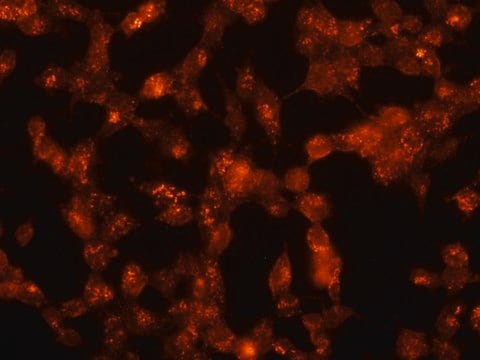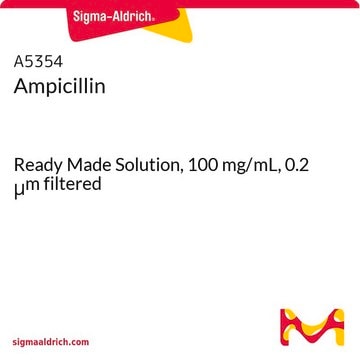ABE1354
Anti-Exo1
from rabbit
Synonyme(s) :
Exonuclease 1, hExo1, Exonuclease I, hExoI
About This Item
Produits recommandés
Source biologique
rabbit
Niveau de qualité
Forme d'anticorps
affinity isolated antibody
Type de produit anticorps
primary antibodies
Clone
polyclonal
Espèces réactives
human
Conditionnement
antibody small pack of 25 μg
Technique(s)
immunoprecipitation (IP): suitable
western blot: suitable
Numéro d'accès NCBI
Numéro d'accès UniProt
Modification post-traductionnelle de la cible
unmodified
Informations sur le gène
human ... EXO1(9156)
Description générale
Spécificité
Immunogène
Application
Western Blotting Analysis: A 1:1,000 dilution from a representative lot detected Exo1 in HeLa and siExo1 hela cell lysates (Courtesy of Dr. Zhongsheng You at Washington University in St. Louis).
Epigenetics & Nuclear Function
Qualité
Western Blotting Analysis: 2 µg/mL of this antibody detected Exo1 in 293T cells transfected with GFP-Exo1.
Description de la cible
Forme physique
Stockage et stabilité
Autres remarques
Clause de non-responsabilité
Not finding the right product?
Try our Outil de sélection de produits.
Code de la classe de stockage
12 - Non Combustible Liquids
Classe de danger pour l'eau (WGK)
WGK 1
Point d'éclair (°F)
Not applicable
Point d'éclair (°C)
Not applicable
Certificats d'analyse (COA)
Recherchez un Certificats d'analyse (COA) en saisissant le numéro de lot du produit. Les numéros de lot figurent sur l'étiquette du produit après les mots "Lot" ou "Batch".
Déjà en possession de ce produit ?
Retrouvez la documentation relative aux produits que vous avez récemment achetés dans la Bibliothèque de documents.
Notre équipe de scientifiques dispose d'une expérience dans tous les secteurs de la recherche, notamment en sciences de la vie, science des matériaux, synthèse chimique, chromatographie, analyse et dans de nombreux autres domaines..
Contacter notre Service technique








